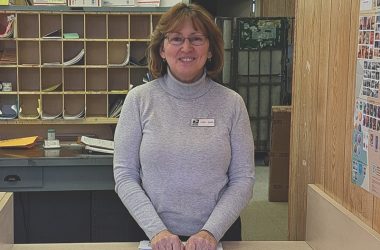by Steve French
1842 was an exciting year for the people of Morgan County. On the morning of May 30, a passenger train carrying B & O executives and various Baltimore VIP’s departed Baltimore and, after stops at Harpers Ferry and Martinsburg, that afternoon arrived at Alpine Depot, just across the Potomac from Hancock. While there, the dignitaries crossed the river and visited the town.
This event marked the opening of the line’s freight and passenger service from Alpine eastward. Five months later, on November 3, the company held another ceremony at Cumberland marking the completion of another 55-miles of track to the “Queen City of the Alleghenies.”
Over the following years, the B&O brought considerable economic growth to areas along the line. Not only did the company employ local men and provide reliable shipping for farm, forest, mineral and industrial products, but it also had affordable ticket prices for travelers, as well.
Over the years, one drawback to these advantages was the unforeseen number of crippling and fatal injuries among railroad workers, people walking along the track, and even hoboes hitching a free ride.
For example, just at Sleepy Creek during 1902 and 1903, three men were killed in separate accidents including the shocking death of local James Keesecker who jumped from a freight and “fell under the wheels which cut the top of his head off.”
The following are two of Morgan County most horrendous railroad tragedies that happened just ten days apart.
The Last Roll Call
In passing through steep mountainous regions, rockslides were a sometimes deadly problem for railroaders. Although the following incident did not occur in Morgan County it resulted in the heartrending deaths of five local men and injuries to at least 10 other natives.
On the evening of Saturday, May 19, 1906 a two-car Western Maryland Railroad work train transporting a 40-man construction crew back to camp had just exited the east end of Indigo Tunnel. Suddenly, Conductor Luther Hull spotted a massive boulder on the track, dead ahead.
With the engine pushing from the rear, Hull, riding in the lead car pulled the emergency brake and jumped clear. Slowing somewhat but still sliding along at 25-miles an hour, the car slammed into the rock straight away.
The Morgan Messenger reported that, “The two cars buckled in the center and fell over a bank about fifteen feet high, taking the men with them and landing into the canal.”
They sank quickly.
Frantic men struggled to escape the covered cars and reach the surface. Once George Youngblood bobbed up out of the water, he realized that his friends George Hurley and Daniel Steinbaugh were missing.
Youngblood “swam back and dived to where they were, removed a board that was holding them down and saved their lives.” The paper hailed him as “the hero of this awful calamity.”

The author at the site of the train wreck.
Five minutes before the wreck, some B&O track hands working just across the Potomac from the tunnel had heard the boulder crashing down Sideling Hill and spotted it blocking the track. Unfortunately, the men had failed to get across the Potomac in time to stop oncoming traffic. Now, they sent word of the wreck to Great Cacapon Station.
When the news of the smash up reached town, an eyewitness described the scene “as one of excitement, worry and anxiety on the part of the people, especially those who had loved ones on the ill-fated train.”
Many of the community then rushed to the site, about four miles upriver. Soon arriving there, they helped “in getting the dead out and administering to the injured.”
Over in Maryland, a wire sent from Pearre Station — less than three miles down the line — relayed the awful news to Western Maryland’s Hagerstown headquarters. Officials there soon dispatched company physician Dr. J. McPherson Scott to lead the relief effort.
That night, Scott reported three men dead, 14 injured and two still missing. The next morning, rescuers finally recovered the bodies of the ill-fated pair.
According to the May 21 issue of the Baltimore American, McPherson identified the dead as Benjamin (Robert) Carter, Charles Clingerman, J.W. and Charles Henry, and Charles Swope. Of those hurt, the doctor commented that, “all of the injured would probably recover. There injuries consisted of cuts, bruises and lacerations.”
By that afternoon, Assistant Trainmaster Robert Sheets in charge of wrecking crews from Hagerstown had “cleared up the wreck.”
Back in “The Hub City” recovering from his injuries, conductor Hull was praised widely.
“But for his prompt action,” the American reported,” … the heavy engine would have crushed the cars in front of it.”
One-legged Hull, however, was probably less concerned over his newfound fame than the fact that he lost his artificial leg when he jumped from the train.
“Monday,” The Messenger reported, “was a sad day for the village of Great Cacapon, where the hand of sorrow had entered so many homes.”
That morning, Mt. Nebo church, about six miles to the west, was the location for Charley Clingerman’s service. Crushed between the cars, Charley, just 22, had recently moved to the county.
In the afternoon, a filled to capacity Great Cacapon United Brethren church was the setting for the combined funerals of the other railroaders. In fact, so large was the crowd that half the mourners stood outside. Behind the pulpit, Rev. R. N. Sybolt looked down of the coffins “of four young men who had been so suddenly cut off in the prime of life.”
Afterward, the remains of teenagers Robert Carter and Charley Swope along with James Henry were laid to rest in the town cemetery. Charley Henry’s family buried the 16-year-old lad in Berkeley Springs. All had drowned.
In its report of the accident, The Messenger criticized the company “for delaying the work of rescue and for not having a watchman at the point where the rock fell, where a watch box is located.”
Couple Hurled Into Eternity
On the evening of May 29, 1906, 20-year-old Hattie Royce and boyfriend Richard Robertson, only 26, had just left her parent’s Paw Paw home and proceeded to take a walk down the B&O’s eastbound track. Just above the upper crossing, they heard a fast freight coming and stepped aside.
According to a report that appeared the next day’s issue of the Baltimore American, the couple waited till the train passed and then, without looking, started crossing the westbound track.
In a split second of inattention, “They… stepped in front of oncoming passenger train,” a scribe wrote, “which struck both, killing them instantly and hurling their bodies over the embankment down to the riverside.”
Upon witnessing the accident, the girl’s shocked mother grabbed her baby daughter, raced down her front porch steps, and dashed to Hattie’s side. Somehow, Mrs. Royce dropped the infant, injuring the child severely.
In its May 31 edition, The Messenger reported that Hattie, formerly of Berkeley Springs, would be buried there that same day. Her father Frederick Royce had moved the family first to Magnolia and later to Paw Paw,
Commenting on Robertson, who lived across the Potomac and worked as a Western Maryland Railroad camp cook, the paper related another horrifying family catastrophe.
Although his 12 brothers survived Richard, “About four years ago, two of his younger half-brothers and three of his half-sisters were cremated the night their house was destroyed by fire.”
On June 8, the Baltimore Sun noted that since the accident Samuel Robertson, Richard’s elderly uncle, had suffered a fatal heart attack. As to the condition of the baby, “there is no hope for recovery.”
Morgan County’s railroad history is the subject of a lecture by French this Saturday, September 19 at 10 a.m. at the Church of Christ in Berkeley Springs. The lecture is part of the Bicentennial Lecture Series to celebrate the 200th year of Morgan County.
The author would like to thank James Droegemeyer, Tommy Swain and Charlie Whisner for their help with this article. Steve French can be reached a sfrench52@yahoo.com









